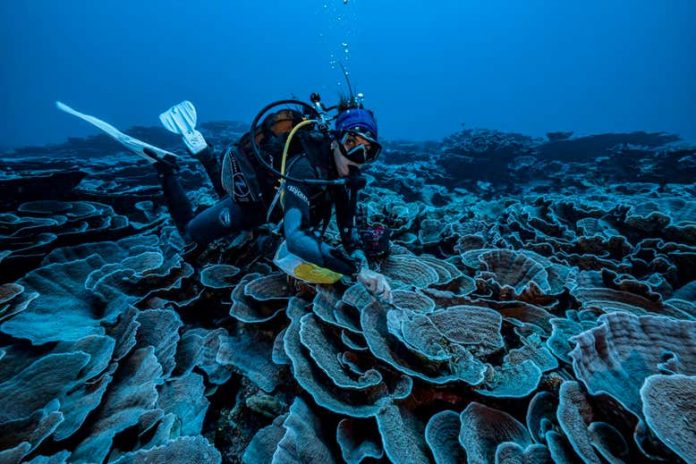When French Polynesia experienced a bleaching event in 2019, against the odds, this giant, rose-shaped coral reef survived
This coral reef, located off the coast of Tahiti, is at depths of between 30 to 65 metres. This is highly unusual, as globally, coral is normally located at a depth of 25 metres. This fact gives scientists and experts hope that there are more immense corals in pristine condition, lurking in deeper pockets of the oceans.
At roughly 3km in length, with a width of something between 30 and 65 metres, this is one of the most immense, healthy corals to be documented globally.
Why are reefs so important?
Over six million people work in small-scale fisheries that rely on tropical coral reefs. In regions with high rates of malnourishment, fisheries help to feed hundreds of millions of coastal people.
Public global health is directly tied to the fates of coral reefs, alongside the biodiversity of a marine environment.
According to The Pacific Community, the regional scientific and technological organisation, the condition of the reef has been documented since atleast 1957. In their 1957 report, two fisheries officers even remarked that “the comparatively poor population of the reef around Tahiti is usually attributed to gross overfishing.”
This new discovery will shed new light on fisheries dynamics in the region.
Dr. Laetitia Hedouin, France’s National Centre of Scientific Research (CNRS) said: “French Polynesia suffered a significant bleaching event back in 2019 however this reef does not appear to have been significantly affected. The discovery of this reef in such a pristine condition is good news and can inspire future conservation.
“We think that deeper reefs may be better protected from global warming.”
Luckily, the tragedy of the Tonga explosion has not impacted this part of the ocean.
Why are scientists only just discovering this reef?
Until right now, it has been really difficult for scientists to study reefs at a depth of over 30 metres. Unlike scientists detecting fossils or metal ores, there is no way to really understand what a coral looks like without human divers.
The recent jump in discovery is due to technology, which lets the team take longer dives at these depths. A team dived for around 200 hours to document this rose-shaped reef near Tahiti.
Experts have been working on techniques to rebuild bleached reefs over the last few years. However, finding out that there are potentially more immense, undiscovered reefs thriving in difficult conditions gives conservationists some fresh hope about the future.
“It was magical to witness giant, beautiful rose corals which stretch for as far as the eye can see. It was like a work of art.” said Alexis Rosenfeld, French photographer.











